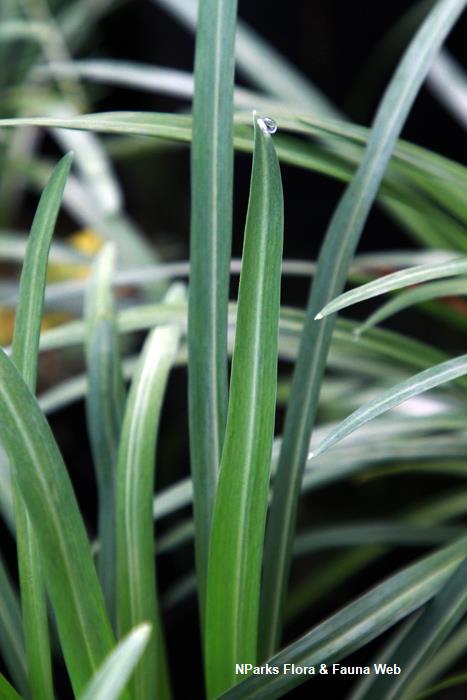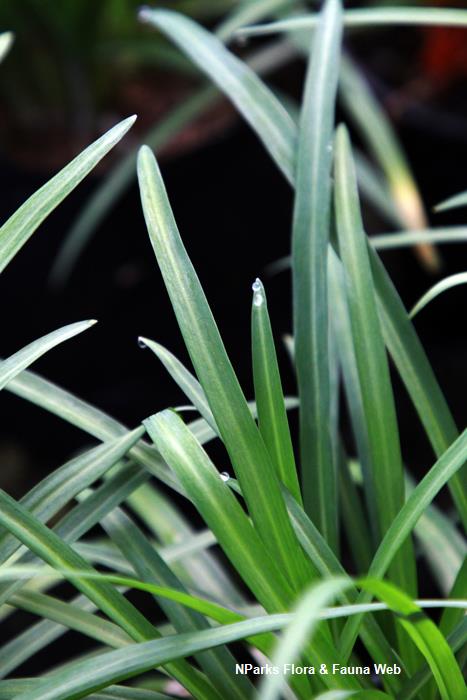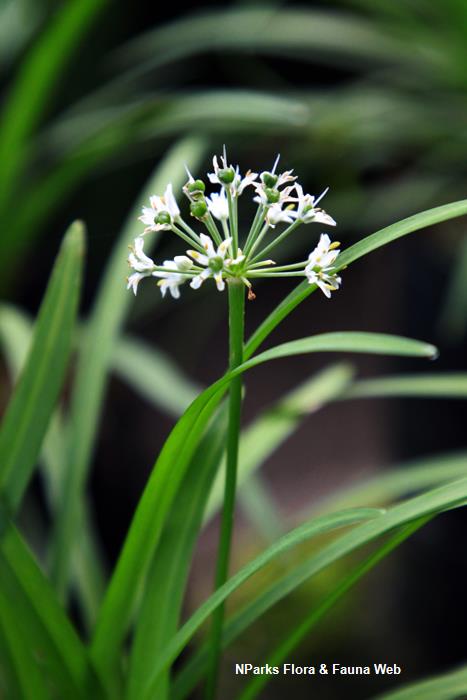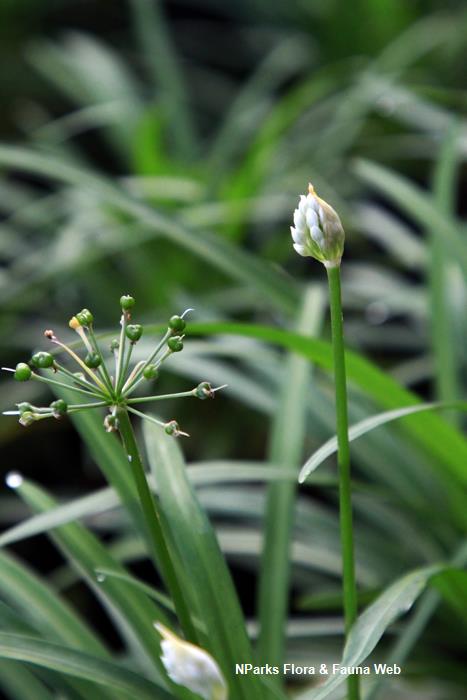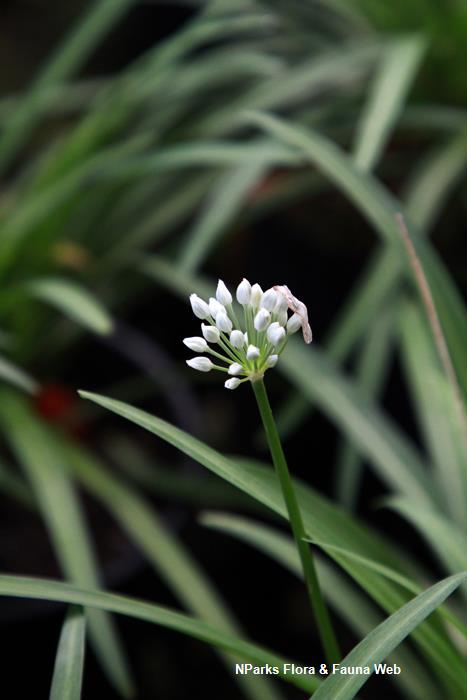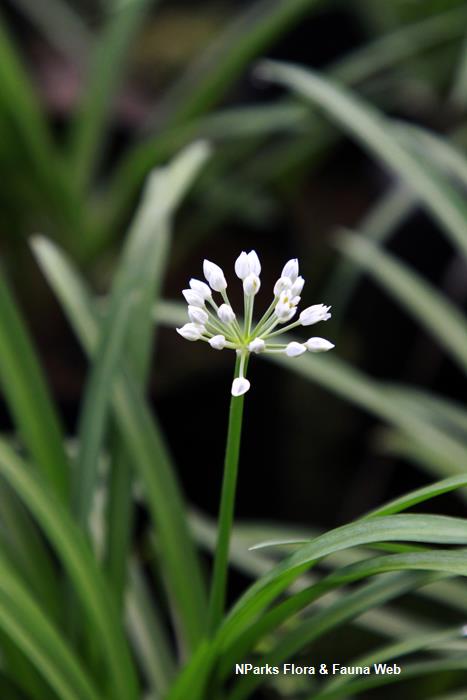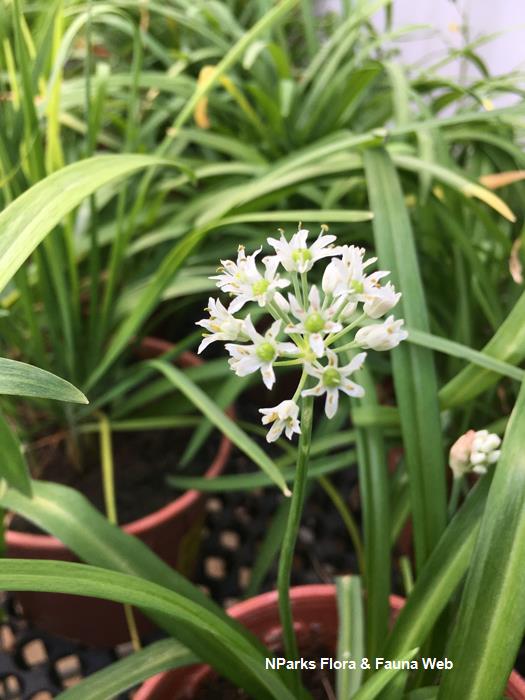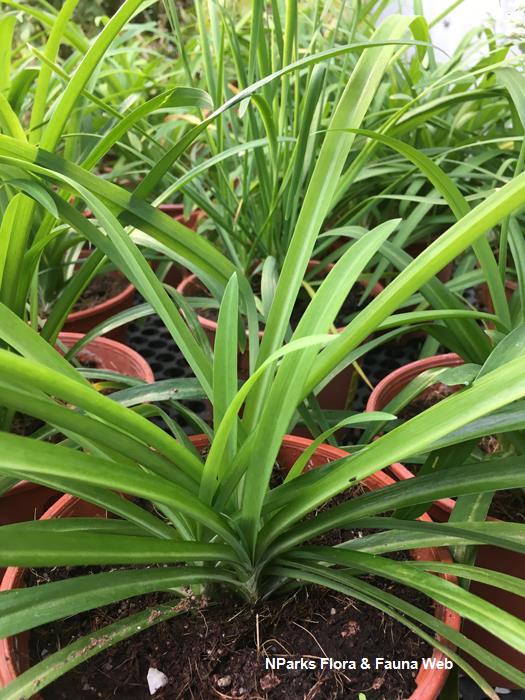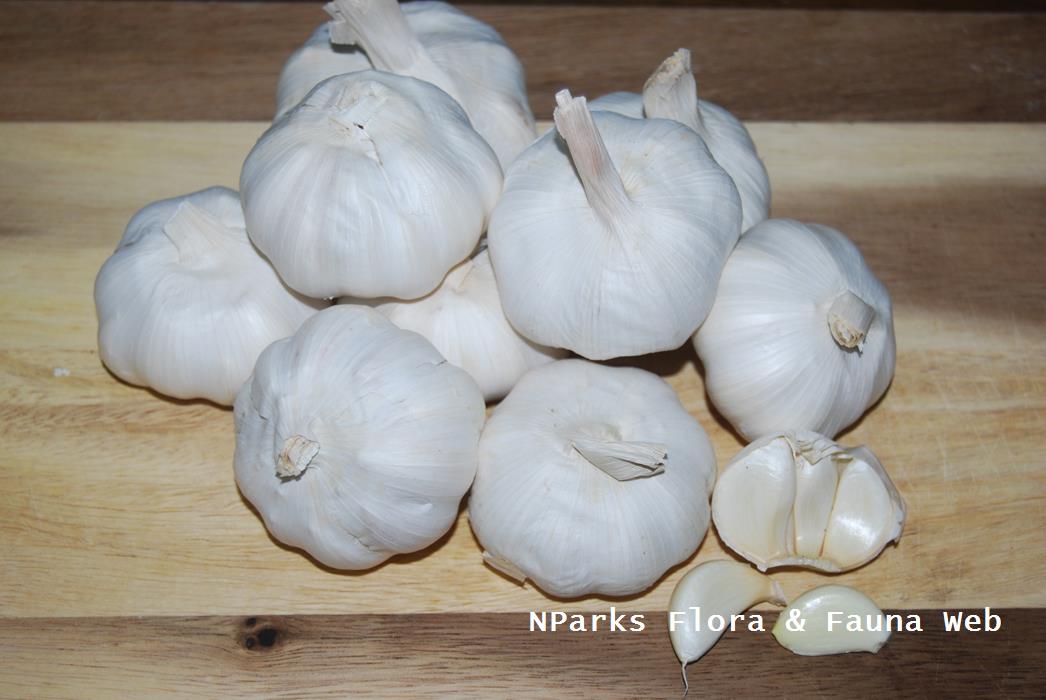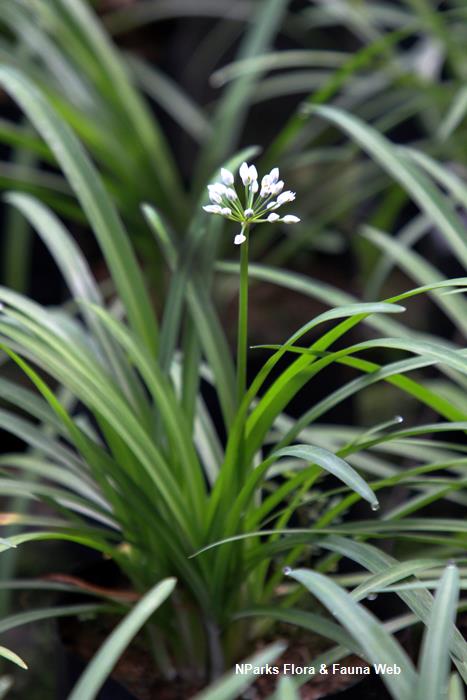
Back
Allium hookeri Thwaites
| Family Name: | Amaryllidaceae |
| Common Name: | Chinese Garlic Chives, Royale Chives, Hooker's Onion, East Himalayan Chives, Green Dragon Chives, 青龙菜 (Qing Long Cai) |
Allium hookeri, or commonly known as Chinese Garlic Chives, is a perennial herbaceous plant. The leaves, roots and bulbs of this nutritious plant are widely used as vegetables or flavouring in Asian cuisine. It grows best in moist, well-drained soil under semi-shade.
Name
Classifications and Characteristics
| Plant Division | Angiosperms (Flowering Seed Plants) (Monocotyledon) |
|---|---|
| Plant Growth Form | Herbaceous Plant |
| Lifespan (in Singapore) | Perennial |
| Mode of Nutrition | Autotrophic |
| Plant Shape | Compact |
| Maximum Height | 0.3 m to 0.6 m |
Biogeography
| Native Distribution | India (Assam), Sri Lanka, Tibet, East Himalaya, China South-Central, Myanmar |
|---|---|
| Native Habitat | Terrestrial |
| Preferred Climate Zone | Highland / Montane, Temperate |
| Local Conservation Status | Non-native (Horticultural / Cultivated Only) |
Description and Ethnobotany
| Growth Form | It is a perennial herbaceous plant, growing up to 0.3–0.6 m tall. |
|---|---|
| Foliage | The leaves are green, thick, linear leaves, up to 30–46 cm long × 0.6–0.8 cm wide, with a prominent midrib. |
| Flowers | The inflorescence is a round umbel, with a scape up to 60 cm tall. It is composed of small, white to greenish white, star-shaped flowers. |
| Fruit | The fruit is a papery loculicidal capsule (dry, dehiscent fruit that splits lengthwise in the middle of the fruit's cell). |
| Others - Plant Morphology | It produces slender tunicate bulbs (covered by a tunic or dry, membranous scale leaves). |
| Habitat | It occurs in temperate forests and grasslands on moist soils up to 4,200 m above sea level. |
| Associated Fauna | It is pollinated by wasps (Eumenes sp., Campsomeris sp.) and ants (Camponotus sp.). |
| Cultivation | It grows best in moist, well-drained soils in semi-shade and tolerates full shade. Avoid full sun. To promote healthy growth, apply fertiliser every 1-3 months for plants in the ground. It can be propagated by bulbs and division. |
| Etymology | The genus Allium is derive from the old Latin name for garlic (Allium sativum). The specific epithet hookeri is named in honour of Joseph Dalton Hooker (1817–1911), a British botanist who was a major figure in the history of botany and exploration. |
| Ethnobotanical Uses | Edible Plant Parts : Edible Leaves, Edible Flowers, Edible Storage Organs Food (Fruit or Vegetable): In China, North India, and Southeast Asia, raw or cooked leaves, roots, and bulbs are used as vegetables or flavourings, and flowers are used as a salad garnish. (Herb or Spice) Medicinal: Traditional Medicinal Uses In India, the roots have been traditionally used to treat coughs, colds, burns, injuries and wound healing. The leaves are also used to treat stomach ulcers, fever reduction, and manage blood pressure conditions. The plant contains compounds that may help to protect the brain and prevent age-related diseases. <1> It is important to note that some therapeutic effects from traditional medicinal uses of plants are currently not supported or verified by scientific research. |
Landscaping Features
| Desirable Plant Features | Fragrant (Foliage) |
|---|---|
| Landscape Uses | Container Planting, Small Gardens |
| Thematic Landscaping | Economic Garden |
Fauna, Pollination and Dispersal
| Pollination Method(s) |
|---|
Plant Care and Propagation
| Light Preference | Semi-Shade, Full Shade |
|---|---|
| Water Preference | Moderate Water, Prefers Cool Environment |
| Plant Growth Rate | Moderate |
| Rootzone Tolerance | Well-Drained Soils, Fertile Loamy Soils, Moist Soils |
| Propagation Method | Division, Storage Organ (Bulb) |
Foliar
| Foliage Retention | Evergreen |
|---|---|
| Mature Foliage Colour(s) | Green |
| Mature Foliage Texture(s) | Smooth, Thick |
| Young Flush Texture(s) | Smooth |
| Foliar Type | Simple / Unifoliate |
| Foliar Arrangement Along Stem | Spiral |
| Foliar Attachment to Stem | Sessile |
| Foliar Shape(s) | Non-Palm Foliage (Linear) |
| Foliar Venation | Parallel |
| Foliar Margin | Entire |
| Foliar Apex - Tip | Acute |
| Foliar Base | Truncate / Square |
| Typical Foliar Area | Notophyll ( 20.25cm2 - 45 cm2 ) |
| Typical Foliar Size | 30 cm to 46 cm |
Non - Foliar and Storage
| Root Type | Underground (Fibrous Root, Contractile) |
|---|---|
| Specialised Storage Organ(s) | Underground (Bulb) |
Floral (Angiosperm)
| Flower & Plant Sexuality | Bisexual Flowers |
| Flower Colour(s) | White |
|---|---|
| Flower Texture(s) | Smooth |
| Flower Grouping | Cluster / Inflorescence |
| Flower Location | Terminal |
| Flower Symmetry | Radial |
| Inflorescence Type | Umbel |
| Flowering Habit | Polycarpic |
Fruit, Seed and Spore
| Mature Fruit Colour(s) | Brown |
|---|---|
| Mature Fruit Texture(s) | Papery |
| Fruit Classification | Simple Fruit |
| Fruit Type | |
| Mature Seed Colour(s) | Black |
| Seed Quantity Per Fruit | Few (1-5) |
References
| References | <1> Doan, T-P., Zhang, M., An, J-P., Ponce-Zea, J-E., Mai, V-H., Ryu, B., Park, E-J, & Oh, W-K. (2023). Metabolite Profiling of Allium hookeri Leaves Using UHPLC-qTOF-MS/MS and the Senomorphic Activity of Phenolamides. 15(24):5109. |
|---|
Image Repository
Others
| Master ID | 33817 |
|---|---|
| Species ID | 8233 |
| Flora Disclaimer | The information in this website has been compiled from reliable sources, such as reference works on medicinal plants. It is not a substitute for medical advice or treatment and NParks does not purport to provide any medical advice. Readers should always consult his/her physician before using or consuming a plant for medicinal purposes. |

